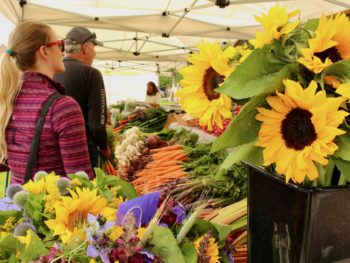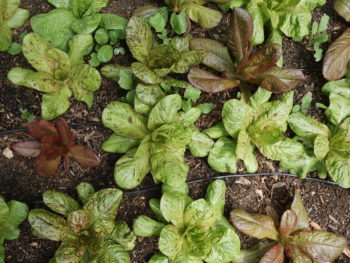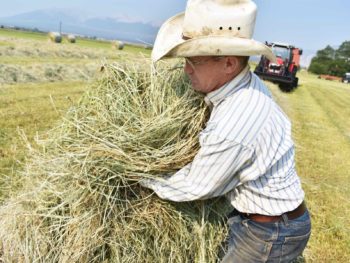What better time to start eating seasonally than summer? When all of the best, most juicy produce is in season – peaches, sungolds, so many varieties of tomatoes, cucumbers, squashes, fresh greens, snap peas, cherries, apricots and so much more.
First of all, let’s start off with the basics. What’s the deal with seasonal eating, and why are people doing it? Seasonal eating is a way of consuming in which you aim to use ingredients that are in season in the region that you live. The goal is to eat more in tune with crops’ natural cycles and to shop more locally.
But why, you may ask. There’s so many different reasons why! Here are a few. Produce that is grown and harvested during its naturally occurring season is more flavorful and nutrient dense than produce that is grown out of season in a greenhouse and/ or artificially ripened. Out of season produce often involves the use of ripening agents, which is a chemical process and requires inputs and additional use of energy. This is worse for your body and for the earth! Eating in season produce aligns your body with the natural cycles of the earth. In season foods provide your body with the nutrients it needs at that time of year. For example, citrus fruits are in season in the winter months (aka flu season), which are rich in Vitamin C, helping to fight off viruses and infections.
Purchasing and consuming locally grown produce hurts our planet less. There is a significantly lower carbon footprint for foods that stay within the community that they are grown. Considerably less fuel is needed for the transportation of the food. Also, produce that is grown in season requires less artificial inputs (as talked about above), resulting in a more sustainable and less harmful for the earth growing process.
They’re better for your wallet! It’s the rule of supply and demand, baby. When supply is high, cost is low. So eating foods that are in season and that are abundant will cost you less money. Also, when you buy in season local foods, your dollar is going straight back into your own community, supporting your local economy. This in turn allows for your own neighborhood to grow and flourish.
Then there’s the joy aspect. I don’t know about you, but I simply love going to the farmer’s market every Saturday – it is pure bliss. The smells, the beautiful colors, the comforting sounds – it’s all so pleasant to take in. I also relish this opportunity to connect with my local farmer’s and get to know them a bit, and make relationships with the people who are feeding me. This provides for the opportunity to ask questions about the growing practices used in the production of the food you’re purchasing. You have the power to verify that your food is being produced in a healthy and sustainable way for you, the workers, and the planet. Those are things that a USDA certified organic label at the grocery store can’t tell you.
So now we’ve talked a bit about the why behind seasonal eating, so now let’s discuss the how.
- Visit the farmers market (see previous post for info)
- Hit up a friendly neighbor with a garden. Maybe offer a trade for some of their produce.
- Pickle, preserve, ferment and freeze when you have an abundance of things for the colder months
- Get a CSA if you’re able – convenient, takes the thinking out of shopping, guarantees in season produce every week.
- Stop by the Guidestone farm stand at the C & S Farm (same parking lot as the Loyal Duke Dog park) Mondays 4 – 6 pm.
- Do your research! Know what’s in season in the area you live. Here are some resources to help you out:









 Market Madness
Market Madness